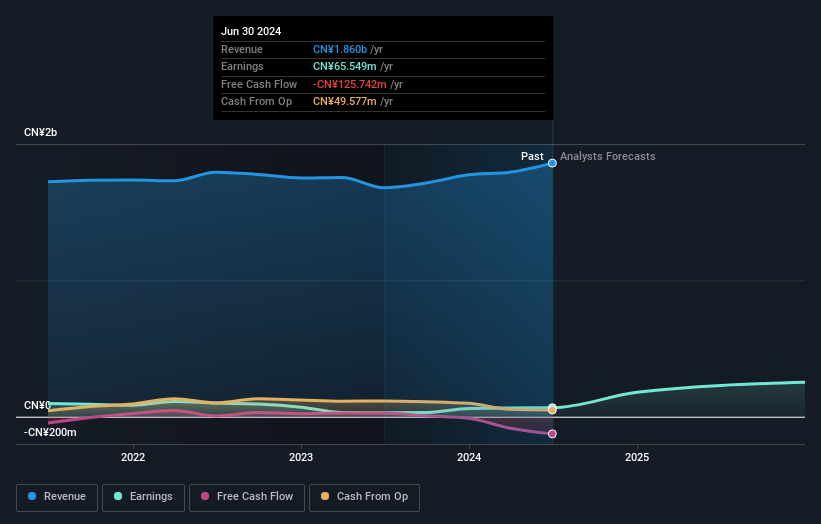Individual investors are Shenzhen Prince New Materials Co.,Ltd.'s (SZSE:002735) biggest owners and were hit after market cap dropped CN¥496m
Key Insights
- Significant control over Shenzhen Prince New MaterialsLtd by individual investors implies that the general public has more power to influence management and governance-related decisions
- A total of 23 investors have a majority stake in the company with 45% ownership
- 37% of Shenzhen Prince New MaterialsLtd is held by insiders
A look at the shareholders of Shenzhen Prince New Materials Co.,Ltd. (SZSE:002735) can tell us which group is most powerful. And the group that holds the biggest piece of the pie are individual investors with 55% ownership. In other words, the group stands to gain the most (or lose the most) from their investment into the company.
While the holdings of individual investors took a hit after last week’s 12% price drop, insiders with their 37% also suffered.
Let's delve deeper into each type of owner of Shenzhen Prince New MaterialsLtd, beginning with the chart below.
Check out our latest analysis for Shenzhen Prince New MaterialsLtd

What Does The Institutional Ownership Tell Us About Shenzhen Prince New MaterialsLtd?
Institutional investors commonly compare their own returns to the returns of a commonly followed index. So they generally do consider buying larger companies that are included in the relevant benchmark index.
Shenzhen Prince New MaterialsLtd already has institutions on the share registry. Indeed, they own a respectable stake in the company. This can indicate that the company has a certain degree of credibility in the investment community. However, it is best to be wary of relying on the supposed validation that comes with institutional investors. They too, get it wrong sometimes. If multiple institutions change their view on a stock at the same time, you could see the share price drop fast. It's therefore worth looking at Shenzhen Prince New MaterialsLtd's earnings history below. Of course, the future is what really matters.

Hedge funds don't have many shares in Shenzhen Prince New MaterialsLtd. The company's CEO Jinjun Wang is the largest shareholder with 28% of shares outstanding. For context, the second largest shareholder holds about 4.6% of the shares outstanding, followed by an ownership of 2.9% by the third-largest shareholder. Interestingly, the second-largest shareholder, Wujun Wang is also Senior Key Executive, again, pointing towards strong insider ownership amongst the company's top shareholders.
Our studies suggest that the top 23 shareholders collectively control less than half of the company's shares, meaning that the company's shares are widely disseminated and there is no dominant shareholder.
Researching institutional ownership is a good way to gauge and filter a stock's expected performance. The same can be achieved by studying analyst sentiments. There is a little analyst coverage of the stock, but not much. So there is room for it to gain more coverage.
Insider Ownership Of Shenzhen Prince New MaterialsLtd
While the precise definition of an insider can be subjective, almost everyone considers board members to be insiders. The company management answer to the board and the latter should represent the interests of shareholders. Notably, sometimes top-level managers are on the board themselves.
I generally consider insider ownership to be a good thing. However, on some occasions it makes it more difficult for other shareholders to hold the board accountable for decisions.
Our information suggests that insiders maintain a significant holding in Shenzhen Prince New Materials Co.,Ltd.. It has a market capitalization of just CN¥3.6b, and insiders have CN¥1.3b worth of shares in their own names. We would say this shows alignment with shareholders, but it is worth noting that the company is still quite small; some insiders may have founded the business. You can click here to see if those insiders have been buying or selling.
General Public Ownership
The general public, mostly comprising of individual investors, collectively holds 55% of Shenzhen Prince New MaterialsLtd shares. This size of ownership gives investors from the general public some collective power. They can and probably do influence decisions on executive compensation, dividend policies and proposed business acquisitions.
Next Steps:
While it is well worth considering the different groups that own a company, there are other factors that are even more important. Take risks for example - Shenzhen Prince New MaterialsLtd has 1 warning sign we think you should be aware of.
If you are like me, you may want to think about whether this company will grow or shrink. Luckily, you can check this free report showing analyst forecasts for its future.
NB: Figures in this article are calculated using data from the last twelve months, which refer to the 12-month period ending on the last date of the month the financial statement is dated. This may not be consistent with full year annual report figures.
Have feedback on this article? Concerned about the content? Get in touch with us directly. Alternatively, email editorial-team (at) simplywallst.com.
This article by Simply Wall St is general in nature. We provide commentary based on historical data and analyst forecasts only using an unbiased methodology and our articles are not intended to be financial advice. It does not constitute a recommendation to buy or sell any stock, and does not take account of your objectives, or your financial situation. We aim to bring you long-term focused analysis driven by fundamental data. Note that our analysis may not factor in the latest price-sensitive company announcements or qualitative material. Simply Wall St has no position in any stocks mentioned.
 Index Options
Index Options CME Group
CME Group Nasdaq
Nasdaq Cboe
Cboe TradingView
TradingView Wall Street Journal
Wall Street Journal